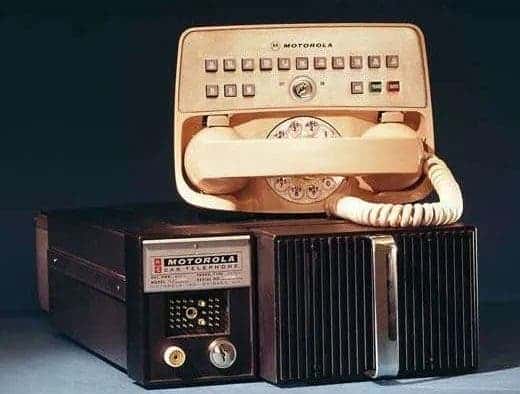There has been a tremendous development in the telecommunication industry over the past 80 years. Many smartphone enthusiasts of today do not really know how far the industry has developed. This is why we put together this interesting article to look at the development of the telecommunication industry since the second world war. During World War II, Motorola’s SCR series walkie-talkies made great achievements on the battlefield. It showed the world the magical charm of wireless communication. It also aroused people’s desire to apply them to the civilian market.
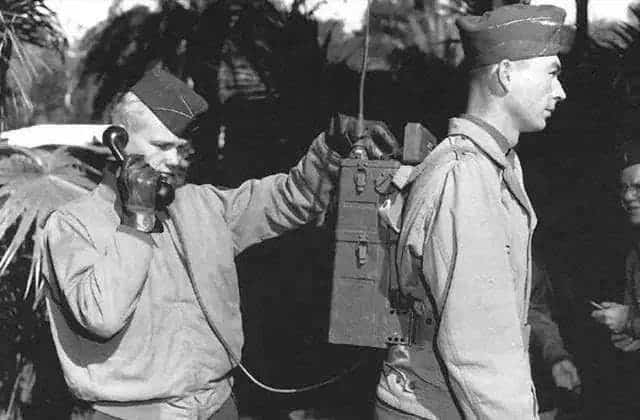
History of mobile phones
After the war, in 1946, AT&T of the United States connected the wireless transceiver to the public switched telephone network (PSTN). It also officially launched the MTS (Mobile Telephone Service) mobile phone service for civilian use.
In MTS, if a user wants to make a call, he must first manually search for a free wireless channel. If he gets a channel, he will then talk to the operator, requesting the other party to make a second connection through the PSTN network.
The entire call uses half-duplex, that is, only one party can speak at the same time. When talking, the user must press the “push-to-talk” switch on the phone. Of course, you will agree with us that this is a very hectic process.
The charging or billing method of MTS is also very primitive. The operator will listen to the call between the two parties throughout the process. He will then manually calculate the cost after the call is over, and confirm the bill. Although MTS looks very different now, it is indeed the first commercial mobile phone system in human history.
Didn’t they say mobile phones were invented in the 1970s? Why did it exist in the 1940s? Don’t panic, the Mobile Telephone referred to by MTS is not a mobile phone. It is actually a Mobile Vehicle Telephone. More precisely, it is a car half-duplex manual walkie-talkie.
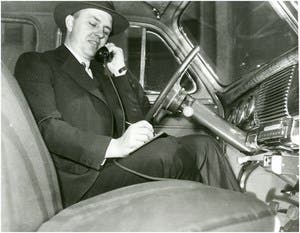
Mobile Vehicle Telephone
With the electronic technology and battery technology at the time, it was impossible to invent a mobile phone. However, there were already a lot of cars at the time.
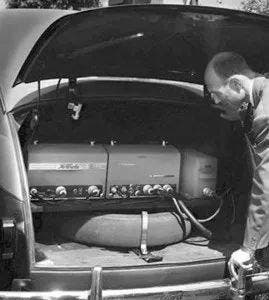
At that time, the “base station” was also very large, a bit like a radio and television tower. There was only one in a city, located in the center of the city, covering a radius of 40 kilometers with extremely high power.
In December 1947, Bell Labs researcher, Douglas H. Ring, pioneered the idea of ”cellular”. This marks the beginning of development in the telecommunication industry. He believes that instead of blindly increasing the signal transmission power, it is better to limit the range of signal transmission and control the signal within a limited area (cell).
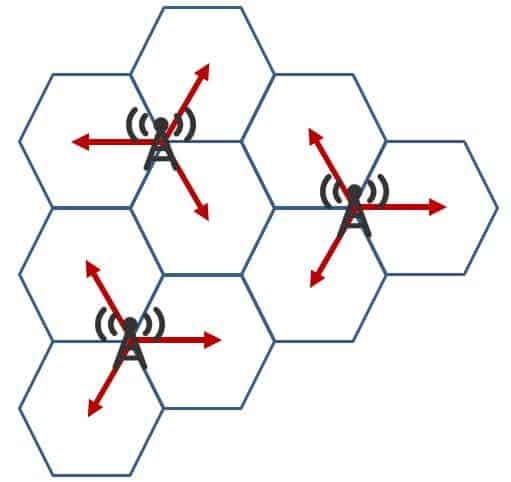
In this way, different cells can use the same frequency without affecting each other, increasing the system capacity.
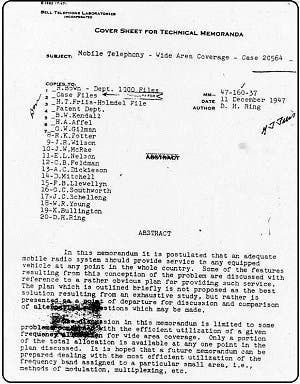
Although the idea of cellular communication is very good, at the time, there were many limitations. Thus, Bell Labs only put it on the shelf as its idea.
Europe & U.S develop their car phone
In the 1950s, more countries began to build car phone networks. For example, in 1952, West Germany launched A-Netz. In 1961, Soviet engineer Leonid Kupriyanovich also invented the ЛК-1 mobile phone, which was also installed on cars. Later, the Soviet Union introduced the Altai car phone system, covering more than 30 cities in the country.
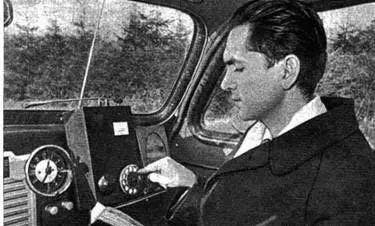
In 1969, the United States introduced an improved MTS car phone system called IMTS (Improved MTS). IMTS supports full-duplex, automatic dialing, and automatic channel search, and can provide 11 channels (later 12). This is a qualitative leap forward relative to MTS.
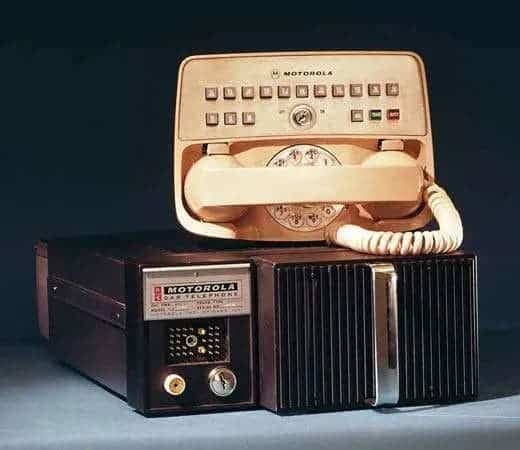
In 1971, Finland launched the public mobile phone network ARP (Auto Radio Puhelin – Puhelin means phone in Finnish). This device works in the 150MHz frequency band but still manual switching and it’s mainly for car phone services.
Whether it is Altai, IMTS, or ARP, it was later called “0G” or “Pre-1G (pre-1G)” mobile communication technology. This is the history of the telecommunication industry before 1G. Now, let’s look at what the telecommunication industry offers from the 1G period
1G era in the telecommunication industry
The advancement of semiconductor technology gave more room for development in the telecommunication industry. This didn’t happen until the 70s. In 1973, Motorola engineers, Martin Cooper and John F. Mitchell, finally wrote history. They did this by inventing the world’s first truly mobile phone (a handheld personal mobile phone).
The phone is named DynaTAC (Dynamic Adaptive Total Area Coverage). It is 22cm high, weighs 1.28kg, can talk for 20 minutes, and has a striking antenna.
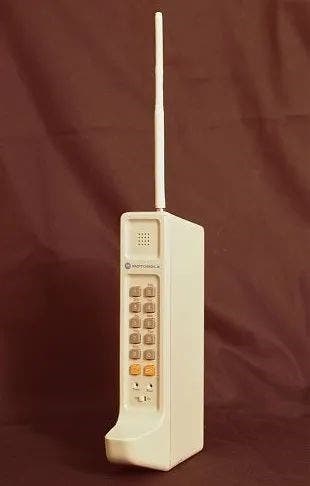
In 1974, the Federal Communications Commission (FCC) approved part of the radio frequency spectrum for use in cellular network testing. However, the experiment was delayed until 1977 before it officially started. At the time, the two rivals AT&T and Motorola were involved in the experiment.
AT&T was “deprived” of the commercial use of satellite communications by the US Congress in 1964. In desperation, they formed a mobile communications department at Bell Labs, looking for new opportunities.
1G progress is slow but steady
Between 1964 and 1974, Bell Labs developed an analog system called HCMTS (High-Volume Mobile Telephone System). The signaling and voice channels of the system use 30kHz bandwidth FM modulation, and the signaling rate is 10kbps.
Since there was no standardization organization for wireless mobile systems at that time, AT&T established its own standard for HCMTS. Later, the Electronic Industries Association (EIA) named this system Interim Standard 3 (IS-3).
In 1976, HCMTS changed its name to AMPS (Advanced Mobile Phone Service). AT&T is using AMPS technology to conduct FCC trials in Chicago and Newark.
Let’s look at Motorola again
In the early days, Motorola developed a RCCs (Radio Common Carrier) technology and made a lot of money. Therefore, they have been strongly opposed to the FCC’s release of spectrum for cellular communications, so as not to affect their RCCs market. But at the same time, they were also desperately developing cellular communication technology and making technical reserves. This was the birth of DynaTAC.
After the FCC released the spectrum, Motorola conducted trials in Washington based on DynaTAC. While they were still slowly experimenting, other countries had already taken the lead.
Japan has the first 1G commercial network
In 1979, Nippon Telegraph and Telephone (NTT) launched the world’s first commercial automated cellular communication system in the Tokyo metropolitan area. This system was later considered to be the world’s first 1G commercial network.

At that time, the system had 88 base stations, supporting fully automatic call switching between different cell sites without manual intervention. The system adopts FDMA technology, the channel bandwidth is 25KHz, it is in the 800MHz frequency band, and the total number of duplex channels is 600.
Norway and Sweden take the 1G lead in Europe
Two years later, in 1981, the Nordic countries, Norway and Sweden, established Europe’s first 1G mobile network – NMT (Nordic Mobile Telephones). Soon after, Denmark and Finland joined them. NMT became the world’s first mobile phone network with international roaming capabilities.
Later, Saudi Arabia, Russia, and some other Baltic and Asian countries also introduced NMT.
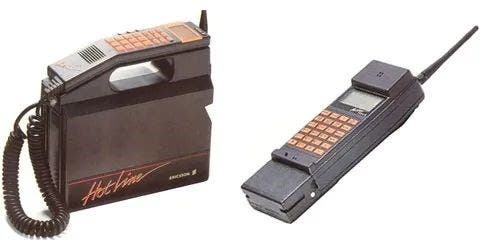
Motorola has the world’s first 1G commercial mobile phone
In September 1983, Motorola released the world’s first commercial mobile phone, DynaTAC 8000X. This device weighs 1kg and can talk continuously for 30 minutes. It takes 10 hours to fully charge, but the price is as high as $3,995.
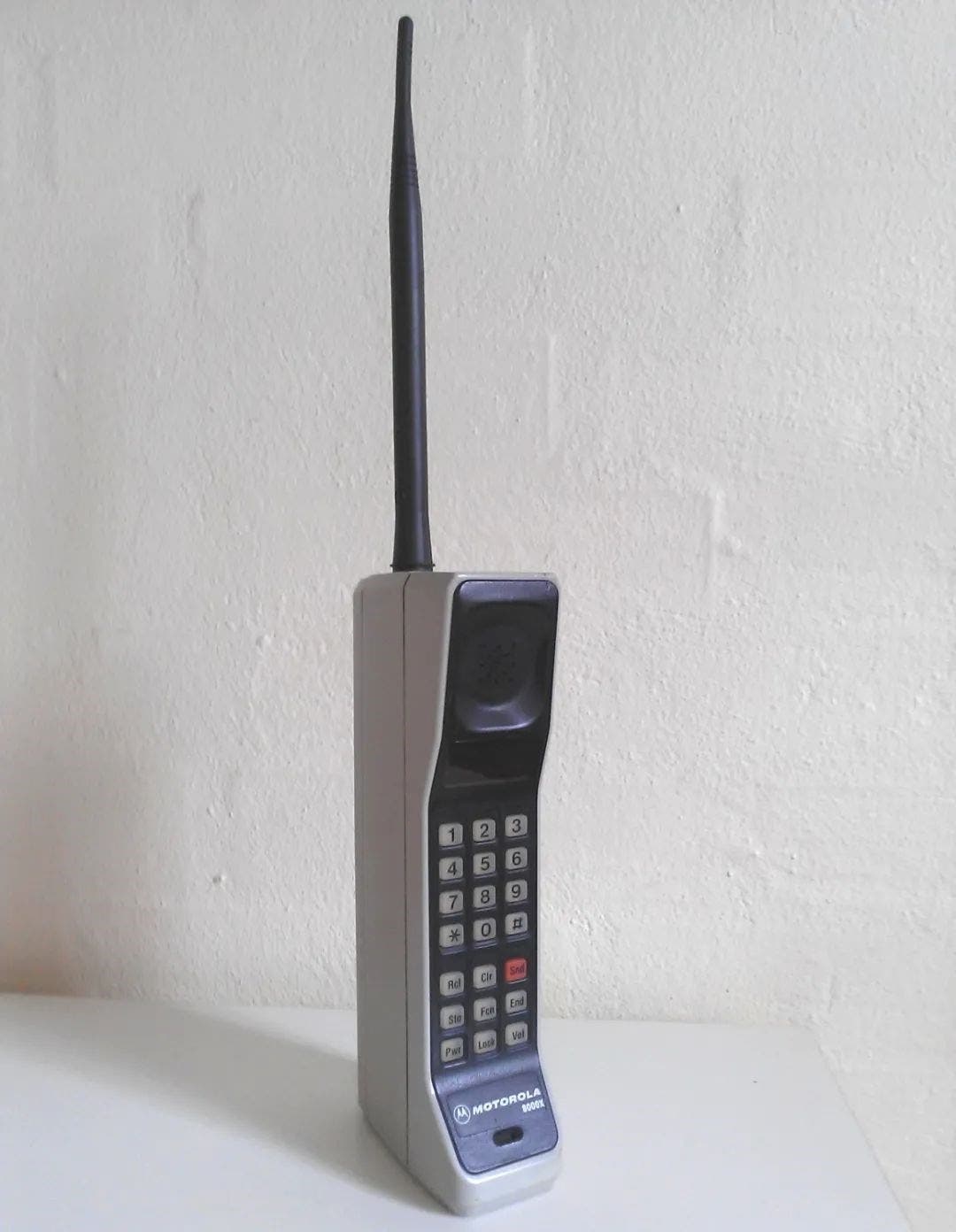
The U.S leads in 1G technology for South & North America
In 1983, the United States, with hindsight, finally remembered to develop its own 1G commercial network. On October 13, 1983, Americitech Mobile Communications Company launched the first 1G network in the United States based on AMPS technology.
Gizchina News of the week
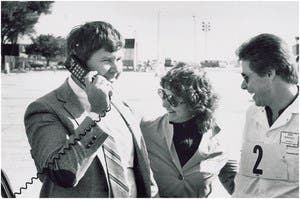
This network can use both car phone and DynaTAC 8000X. The FCC has allocated 40MHz bandwidth for AMPS in the 800MHz frequency band. With these bandwidths, AMPS carries 666 duplex channels, and the bandwidth of a single upstream or downstream channel is 30KHz. Later, the FCC allocated additional 10MHz bandwidth. Therefore, the total number of duplex channels of AMPS becomes 832.
In the first year of commercial use, Americitech sold approximately 1,200 DynaTAC 8000X mobile phones, accumulating 200,000 users. Five years later, the number of users became 2 million.
The rapidly growing number of users far exceeds the capacity of the AMPS network. Later, in order to increase capacity, Motorola introduced a narrowband version of AMPS technology, namely NAMPS. It divides the existing 30KHz voice channel into three 10KHz channels (the total number of channels becomes 2,496) to save spectrum and expand capacity.
The U.K joins the 1G train
In addition to NMT and AMPS, another widely used 1G standard is TACS (Total Access Communication Systems), which was first released in the UK.
In February 1983, the British government announced that the two companies, BT (British Telecom) and Racal Millicom (predecessor of Vodafone), would build TACS mobile communication networks based on AMPS technology.
On January 1, 1985, Vodafone officially launched the TACS service (equipment purchased from Ericsson). At that time, there were only 10 base stations covering the entire London area.
The single-channel bandwidth of TACS is 25KHz, the uplink uses 890-905MHz, the downlink 935-950MHz, a total of 600 channels are used to transmit voice and control signals.
The TACS system is mainly developed by Motorola and is actually a modified version of the AMPS system. Except for the frequency band, channel spacing, frequency offset, and signaling rate, they are completely the same.
Compared with NMT in Northern Europe, the performance characteristics of TACS are significantly different. NMT is suitable for the sparsely populated rural environment of the Nordic countries (Scandinavia). It uses a frequency of 450MHz (later changed to 800MHz) and has a larger cell range.
The advantage of TACS is capacity, not coverage distance. The TACS system has a low transmitter power and is suitable for a country with a high population density and large urban areas such as the United Kingdom.
As the number of users increased, TACS later added some frequency bands (10MHz) and became ETACS (Extended TACS). Japanese NTT developed JTACS based on TACS.
China joins 1G development
It is worth mentioning that the first mobile communication base station built by China in Guangzhou in 1987 used TACS technology and the partner was Motorola.
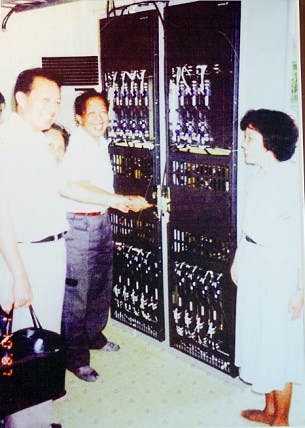
In addition to AMPS, TACS, and NMT, 1G technology also includes C-Netz in Germany, Radiocom 2000 in France, and RTMI in Italy. These blooming technologies announced the arrival of the mobile communication era. Actually, in the telecommunication industry, there was no such name as 1G at the time it was used. It was only after the emergence of 2G technology that they were called 1G to distinguish them.
2G era in the telecommunication industry
In 1982, the European Commission for Posts and Telecommunications established the “Mobile Expert Group” to be responsible for the study of communication standards.
This “mobile expert group”, the French abbreviation is GroupeSpécialMobile, later the meaning of this abbreviation was changed to “Global System for Mobile communications”. This is what we all now know as GMS
The purpose of the establishment of GSM is to establish a new pan-European standard and develop a pan-European public land mobile communication system. They put forward requirements for efficient use of spectrum, low-cost systems, handheld terminals, and global roaming.
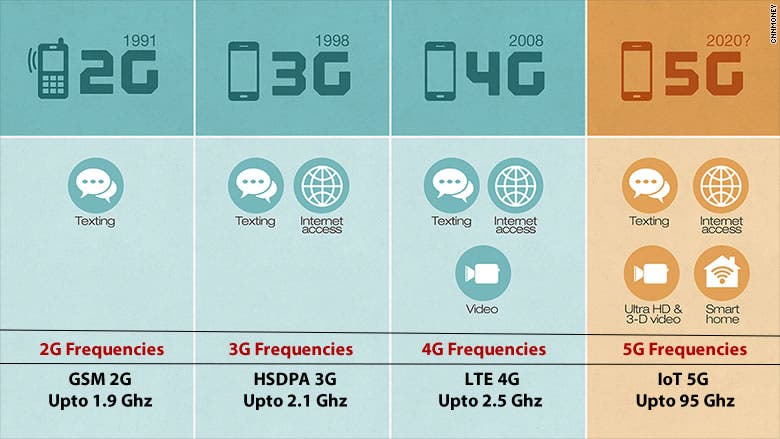
In the following years, the European Telecommunications Standards Organization (ETSI) was able to complete the formulation of the GSM 900MHz and 1800MHz (DCS) specifications.
In 1991, the Finnish company Radiolinja (now part of ELISA Oyj) launched the world’s first 2G network based on the GSM standard.
As we all know, 2G adopts digital technology to replace 1G’s analog technology. This greatly improves the call quality and system stability. It also makes it safer, more reliable, and reduces equipment energy consumption.
In addition to GSM, another well-known 2G standard is CDMA launched by Qualcomm. To be precise, it is IS-95 or cdmaOne. IS-95 has two versions, IS-95A, and IS-95B. The former can support peak data rates up to 14.4kbps, while the latter reaches 115kbps.
In addition to IS-95, the United States also produced IS-54 (North America TDMA Digital Cellular) and IS-136 (1996). Actually, 2G is not only just GSM and CDMA. The Cellular Telephone Industries Association developed a digital version of AMPS based on AMPS technology, called D-AMPS (Digit-AMPS). This is actually a 2G standard. Another 2G standard is PDC (Personal Digital Cellular) from the Japanese.
2.5G era
At the end of the 20th century, with the explosion of the Internet, people put forward a strong demand for mobile Internet access. Thus, GPRS (General Packet Radio Service, General Packet Radio Service) hit the road.
We can regard GPRS as a “plug-in” of GSM. With the help of GPRS, the network can provide a data service rate of up to 114Kbps.
The first proposal of GPRS is in 1993. However, it took another four years for the first phase of the agreement to take place in 1997. This appears to be a turning point in the history of cellular communication as well as the telecommunication industry. At this point, data services became the main development direction of mobile communications.
2.75G era
After the launch of GPRS technology, telecom operators also came up with a faster technology. This technology is the Enhanced Data-rates for GSM Evolution (EDGE). Of course, we all know or have heard of “EDGE” at some point in our lives.
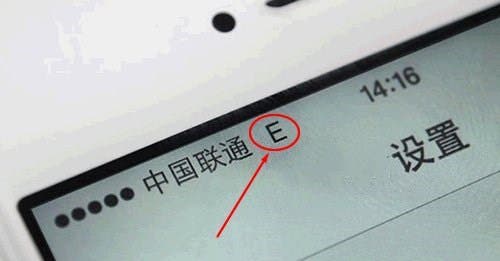
The biggest feature of EDGE is that it can provide twice the data service rate of GPRS without replacing equipment. The world’s first EDGE network was deployed by AT&T in 2003 on its own GSM network.
3G era in the telecommunication industry
In 1996, Europe established the UMTS (Universal Mobile Telecommunications System) forum, focusing on coordinating European 3G standard research. The European camp represented by Nokia, Ericsson, and Alcatel clearly recognizes the advantages of CDMA. Thus, they have developed a W-CDMA system with similar principles.
It is called W-CDMA (Wide-CDMA) because its channel bandwidth reaches 5MHz, which is wider than the 1.25MHz of CDMA2000.

Many people are confused about the relationship between UMTS and WCDMA. In fact, UMTS is the general term for 3G in Europe. WCDMA is an implementation of UMTS and generally refers to the wireless interface part. The TD-SCDMA we will mention later also belongs to UMTS.
In order to be able to compete with the United States, European ETSI also jointly established the 3GPP (3rd Generation Partnership Project) with Japan, China, etc., to cooperate in the formulation of global third-generation mobile communication standards.
In contrast, the North American camp has different opinions.
Fierce competition with 3G
Companies represented by Lucent and Nortel support WCDMA and 3GPP. However, the likes of Qualcomm united with South Korea to form the 3GPP2 organization to compete with 3GPP. The standard they launched is the CDMA2000 standard developed based on CDMA 1X (IS-95).
Although CDMA2000 is a 3G standard, the initial peak rate is not high, only 153kbps. Later, through the evolution to EVDO (EVolution Data Optimized), the data rate significantly improved. It provided a peak download speed of 14.7Mbps and 5.4Mbps peak upload speed.
During this period, China also launched its own 3G standard candidate program (also known as TD-SCDMA) to jointly participate in international competition.
After fierce competition and game, the International Telecommunication Union (ITU) finally confirmed the three global 3G standards, namely WCDMA led by Europe, CDMA2000 led by the United States, and TD-SCDMA in China.
In terms of the progress of 3G commercialization, NTT of Japan is again leading the way.
On October 1, 1998, NTT Docomo launched the world’s first commercial 3G network (based on WCDMA) in Japan.
3.75G era in the telecommunication industry
On the basis of UMTS, ETSI and 3GPP have developed HSPA (High-Speed Packet Access), HSPA+, dual-carrier HSPA+, and HSPA+ Evolution. The speed of these network technologies obviously exceeds the traditional 3G, people call it 3.75G.
It is because the speed of HSPA+ is so fast that it even exceeds the early LTE and WiMAX. Therefore, at that time, some operators (such as T-Mobile in the United States) did not immediately start the construction of LTE. However, they upgraded the existing HSPA network to HSPA+. China did a similar thing at the time.
4G in the telecommunication industry
In 1999, the IEEE Standards Committee established a working group to develop wireless metropolitan area network standards. In 2001, the first version of IEEE 802.16 was officially released and later developed into IEEE 802.16m. IEEE 802.16 is later widely known as WiMAX (Worldwide Interconnection for Microwave Access).
WiMAX introduced advanced technologies such as MIMO (multi-antenna) and OFDM (orthogonal frequency division multiplexing). The download rate is significantly higher and this put a lot of pressure on 3GPP.
Therefore, on the basis of UMTS, 3GPP steps up the introduction of LTE (MIMO and OFDM) to compete with WiMAX. Later, it continued to evolve into LTE-Advanced (2009), and the speed was increased several times.
In 2008, the ITU International Telecommunication Union issued the requirements that the 4G standard should follow and named it IMT-Advanced. Only 3GPP’s LTE-Advanced, IEEE’s 802.16m, and TD-LTE-Advanced submitted by the Ministry of Industry and Information Technology of China are truly qualified. In other words, they are true 4G standards.
On December 14, 2009, the world’s first public-facing LTE service network opened in Stockholm and Oslo. The network equipment comes from Ericsson and Huawei, while the user terminal comes from Samsung.
After a fierce industrial war, LTE finally defeated WiMAX and gained worldwide support and recognition. WiMAX quickly lost power and was beaten into the cold.
5G era
We do not need to talk about 5G development, do we? Each of us is a witness of new history. We all witnessed how the 3rd Generation Partnership Project (3GPP) launched 5G (IMT-2020) to dominate the world.
Time flies, time flies. After nearly a century of development, mobile communication networks have grown from scratch, from weak to strong. It has promoted the wheel of history and accelerated social changes.
Where will the future of mobile communications go? Let us wait and see!

